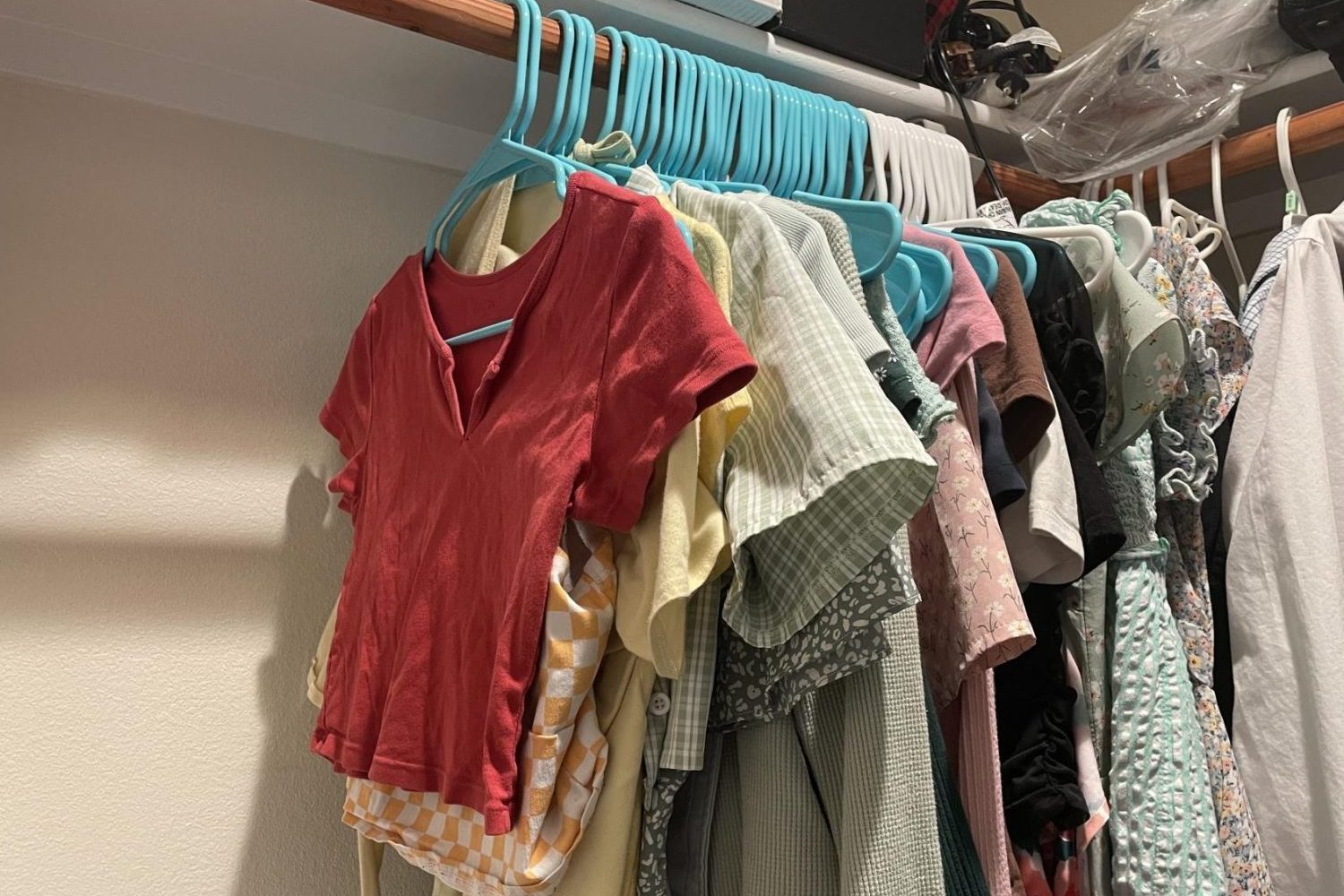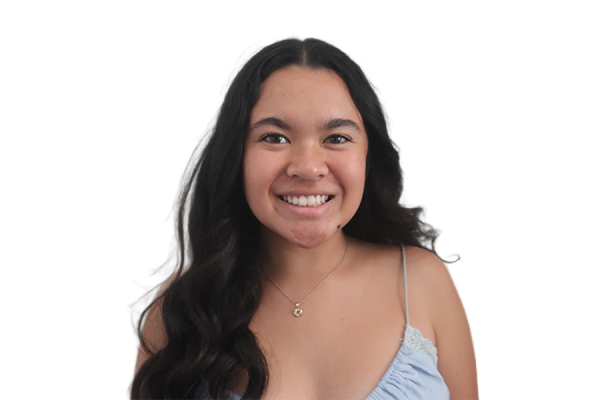Clothes are given a whole new life when donated. Whether someone picks up something of yours at a thrift shop or your clothes get directly given to another person, donating your clothes guarantees them a new journey.
“I donate my clothes to give others an equal opportunity to express themselves in ways that they may not always be financially capable of,” said senior Josh Lisi. “I like to get a variety of clothes from a lot of different places, so if I got some really cool clothes from an antique fair, and I end up donating them, then that gives someone the opportunity for someone who can’t afford expensive clothing to find something very unique.”
As of January 2022, 18 out of every 10,000 people in America are homeless. In addition, the majority of low-income households spend over half of their paychecks on a place to live. Combined with costs for food, there’s not always a lot of money left over for clothing.
Because of these statistics, many organizations strive to make sure people who fall into these categories don’t have to worry about what they wear, such as One Warm Coat and Dress for Success (DFS). Although millions of clothes are donated each year, many people don’t actually know where their clothes go.
“I’m assuming it either gets donated to shelters if they need it, or it goes back into the stores,” said sophomore Leah Wong.
One Warm Coat
Founded in 1992, One Warm Coat has since evolved into a fully functional non-profit organization. Their singular mission is to provide warmth to those who need it.
“There are other organizations that are doing great work in other areas, collecting different types of clothing. We are really focused just on coats because that’s a need even different than clothing,” said Patti Zappa, who is the Executive Vice President of One Warm Coat.
One Warm Coat is a remote organization, with no headquarters and no specific inventory of coats. Instead, they work with a wide variety of organizations to ensure that the different needs of different people are being fulfilled.
“Clothing is very important, but for a coat, people need it to get to work, kids need it to get to school, some people wear them in their home,” Zappa said.
Across the country, One Warm Coat partners with over 15,000 non-profit organizations to make outerwear more accessible. Their partners must be a 501(c) or a school in good standing with the IRS. When agreeing to partner with One Warm Coat, they must also agree that the coats will be given away for free and without discrimination.
“We enable volunteers to hold coat drives, and those coats are kept local and go directly to our non-profit partners,” Zappa said. “We utilize our relationships with non-profits who are already doing important work in communities.”
Outerwear can be donated to One Warm Coat through drives or directly to their non-profit partners. In 2022, 550,264 coats were donated through the work of One Warm Coat and their partners.
“It’s a basic need, it’s an important need, and by focusing all of our efforts just on coats we’re able to have a great impact because it is a really focused mission,” Zappa said.
Dress for Success
Clothes are not always donated for basic needs, but also for professional needs. Dress for Success is a company dedicated to providing professional attire, services, and tools to low-income women. The organization began in the bottom of a church in New York and was founded by Nancy Lublin in 1996 after she received a $5,000 grant from her grandfather while she was in law school.
“She decided to use this grant to create a space for women in her community to receive the career development support which she sees as really needed, and to collect professional clothing to women who are job searching in her community,” said Miracle Gumabo, who is the Digital Programs Associate for both DFS San Francisco and DFS San Jose.
Soon after, DFS was put forward in communities all over the United States by women with the same mission as Lublin. Currently, DFS exists in 140 cities in 25 countries, helping a total of over 1.3 million women. In the Bay Area, DFS has two affiliates that have been operating for the past 17 years. Both offices serve women from Marin all the way down to Gilroy, and also in some parts of the East Bay.
“Our San Francisco location started in 2006, similar to our New York affiliate in the bottom of the old St. Mary’s church, and then in 2009 we moved to our current space, which is now located on Sutter and Powell. Six years after SF opened, we were able to launch DFS San Jose, although we are actually physically located in Milpitas,” Gumabo said.
A main component of DFS is their Career Clothing Program. As part of their program, they have a dedicated career coach to help a woman job search and plan her career. Two appointments are provided for each woman they serve: a first appointment to pick one to two outfits for interviewing and a second appointment after being hired to choose more professional outfits.
“Once she’s hired, she can come back and receive a whole week’s worth of clothing from us, about five more outfits to make sure that her first paycheck does not go to clothing because we can help with that. An outfit usually entails about four pieces of clothing: top, bottom, shoes, handbag–all of those we provide for the women we serve,” Gumabo said.
The way DFS gains their clothing inventory is through monthly donation drives at every location. Every year, one location can receive up to 5,000 pieces of clothing. Volunteers are recruited at each drive to help sort the donated items, and whatever is not kept gets donated to other organizations, such as Hope Services, Goodwill, and more.
“We only keep about 10% of the items that actually come through our doors. We are very picky as to what clothing we provide to women that we serve, we want to make sure that everything we receive is something that’s current and something we would put on our best friend,” Gumabo said.
There are multiple ways to support DFS. Volunteers can help sort clothing or even host a donation drive. The organization accepts gift cards, money, and clothing donations. They also partner with many businesses, as corporate partners and referral agencies.
The DFS Career Clothing Program by Elizabeth Cruz
Why donate?
Closet cleanouts don’t always have to end up in the trash. Pre-loved clothing can mean so much to another person, and different types of donation centers can be found nationwide.
“I donate my clothes pretty often because I like to cycle my wardrobe, but I don’t want it to be impactful negatively so I try to donate whatever clothes I don’t use or give them to friends,” Lisi said. “My mom likes to donate a lot of her clothes so I’ll just go to the store with her and drop them off.”
One Warm Coat and Dress for Success are just a few of many organizations whose missions are to provide clothing to those who need it. One convenient way to donate is at Carlmont, using the bin located on the back road to the right of S-Hall.
In addition to organizations, there are other places to donate clothes, whether it’s at a thrift store, drop-off bin, donation drive, or even a school.
Another local option is dropping clothes off at Savers in Redwood City; they accept donations on behalf of a local non-profit organization. In turn, they pay these non-profit partners for your donations and sell your clothes themselves at severely discounted prices, making them more affordable for shoppers.
“I think thrifting helps provide support for people with lower incomes, it’s more available to them, and hopefully, they can afford it better,” Wong said.
Many see the value in donating clothing, and the impact it can have on other people and the environment. When Lisi donates or thrifts his clothes, he likes to envision the journey they take and the things they encounter.
“It’s like an entire cycle,” Lisi said. “Whenever you get tired of something you pass it on to someone who’s gonna repurpose it and they’ll pass it on to the next person so in that cycle, it rarely goes to waste.”



